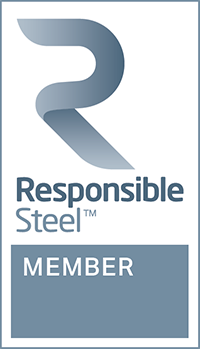Fuelling the Green Economic Revolution
Steel is an important driver of economic growth, and its role in developing nations is especially crucial. Steel is needed to build new roads, buildings, bridges and railway lines and lay pipelines for essentials like water, gas, sanitation and to build factories and machinery. Once the basic infrastructure is in place and GDP is on the rise, the demand starts to rise for consumer goods such as washing machines and refrigerators and for better mobility via trains, buses, and automobiles. All of these require steel for their production and related infrastructure.
Evidently, demand for steel is high today and it is only going to increase in the foreseeable future. The good news is steel also happens to be 100% recyclable. This is important because our planet is struggling with a rising burden of harmful solid waste at present, which is taking a serious toll on our environment. Unlike other materials, steel has a potentially infinite life cycle. This endless recyclability, without loss of properties like strength, versatility and affordability, makes steel extremely unique, resourceful and environment-friendly..
Steel’s antecedent iron fueled the first industrial revolution around the middle of 18th century. Modern steel-making was developed a century later with the invention of the Bessemer process and this set off the second industrial revolution. Another century and a half later, with the problem of global warming and climate change writ large, steel is poised to steer the next big revolution that is the green economic revolution.
As a global society, currently, we are faced with several challenges including poverty eradication, resource shortages, water stress, land stress, environmental degradation and climate change. The challenges are magnified by unmitigated natural disasters and a population which is set to grow from the present 7 billion to 9 billion by 2050, accompanied by rapid urbanisation. The only viable solution to these problems is to transition to a green economy in which economic growth is achieved without compromising environmental and social responsibilities.
And this is where the properties of steel come in. Steel will continue to be needed in both developed and developing countries to create new applications that support sustainable development This is especially true for developing economies, where steel is expected to play a huge role in meeting their growing need for buildings, infrastructure and transport in a sustainable way.
The transition to green economy has begun and steel is playing a critical role in this. Renewable energy, resource efficient and energy efficient buildings, clean energy vehicles as well as infrastructure build-up for fuel efficiency and recycling depend on steel. A green economy is indeed impossible without the unique support of steel.




